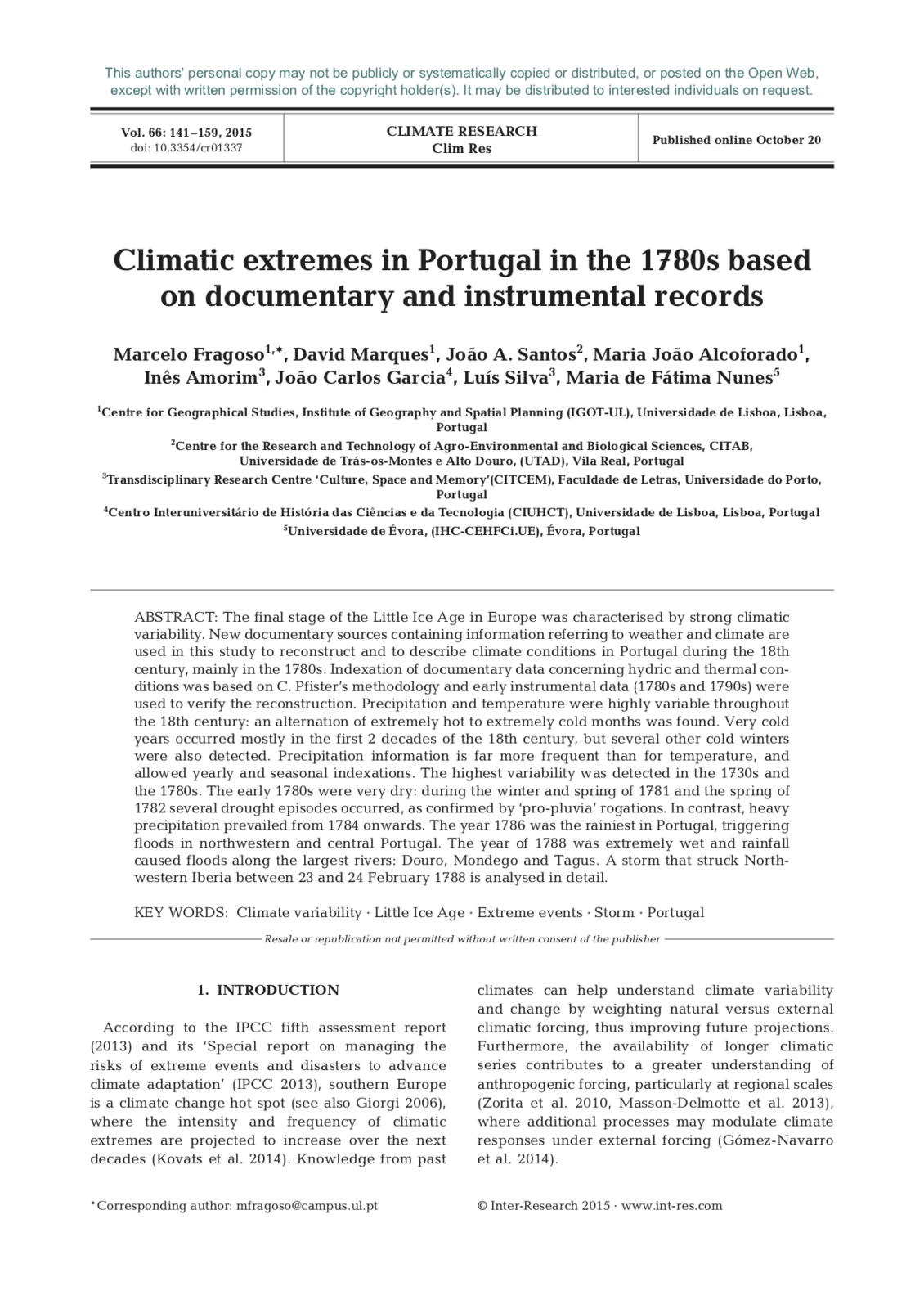Climatic Extremes in Portugal in the 1780s based on documentary and instrumental records
- Autoria
João Carlos Garcia, em colaboração com Marcelo Fragoso, David Marques, João A. Santos, Maria João Alcoforado, Inês Amorim, Luís Silva e Maria de Fátima Nunes
- Ano
- 2015
- Periódico
Climate Research, Oldendorf/Luhe, vol. 66
- Nº de Páginas
- 141-159

Abstract
The final stage of the Little Ice Age in Europe was characterised by strong climatic variability. New documentary sources containing information referring to weather and climate are used in this study to reconstruct and to describe climate conditions in Portugal during the 18th century, mainly in the 1780s. Indexation of documentary data concerning hydric and thermal conditions was based on C. Pfister’s methodology and early instrumental data (1780s and 1790s) were used to verify the reconstruction. Precipitation and temperature were highly variable throughout the 18th century: an alternation of extremely hot to extremely cold months was found. Very cold years occurred mostly in the first 2 decades of the 18th century, but several other cold winters were also detected. Precipitation information is far more frequent than for temperature, and allowed yearly and seasonal indexations. The highest variability was de tected in the 1730s and the 1780s. The early 1780s were very dry: during the winter and spring of 1781 and the spring of 1782 several drought episodes occurred, as confirmed by ‘pro-pluvia’ rogations. In contrast, heavy precipitation prevailed from 1784 onwards. The year 1786 was the rainiest in Portugal, triggering floods in northwestern and central Portugal. The year of 1788 was extremely wet and rainfall caused floods along the largest rivers: Douro, Mondego and Tagus. A storm that struck North - western Iberia between 23 and 24 February 1788 is analysed in detail.